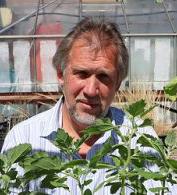A new study into the breeding of salt-tolerant crops has made an important finding, which could prove instrumental in long-term efforts to address global food security.
The research, published in the journal Cell Research, found that quinoa, which is naturally salt-tolerant, could serve as a model for developing salt-tolerant varieties of related crops including spinach and sugar beets.
Co-author Professor Sergey Shabala (pictured above left), from the University of Tasmania’s School of Land and Food, said intensification of agricultural production and heavy irrigation posed a significant challenge for global food security.
Unsustainable agriculture practices can cause soil erosion and soil salinity, which stunts the growth of crops and over a long period of time can lead to infertile soils.

Quinoa has soared in popularity in recent years as a healthy dish. Now, research finds it could help science breed other salt-tolerant crops.
“This latest research is helping to address this challenge by taking a new approach to the breeding of salt-tolerant crops. We focussed on quinoa due to its natural resistance to abiotic stresses such as salinity, drought and low temperatures.
The remarkable salt-tolerance quality of quinoa can be attributed to epidermal bladder cells, which have a volume around 1,000 times greater of that of normal epidermal cells.
“As part of this study, we generated a high-quality genome draft using an inbred line of a quinoa cultivar. This provided important insights and enabled the identification of genes involved in salinity tolerance which provide the basis for molecular breeding in quinoa.”
Professor Shabala said the Food and Agricultural Organisation of the United Nations had listed quinoa as an important future crop to ensure global food security.
The research is a collaboration between the University of
Tasmania, Shanghai Centre for Plant Stress Biology and the University of
Wurzburg. The paper is available online.
Interested in conducting your own research? Apply now to become a research student.
